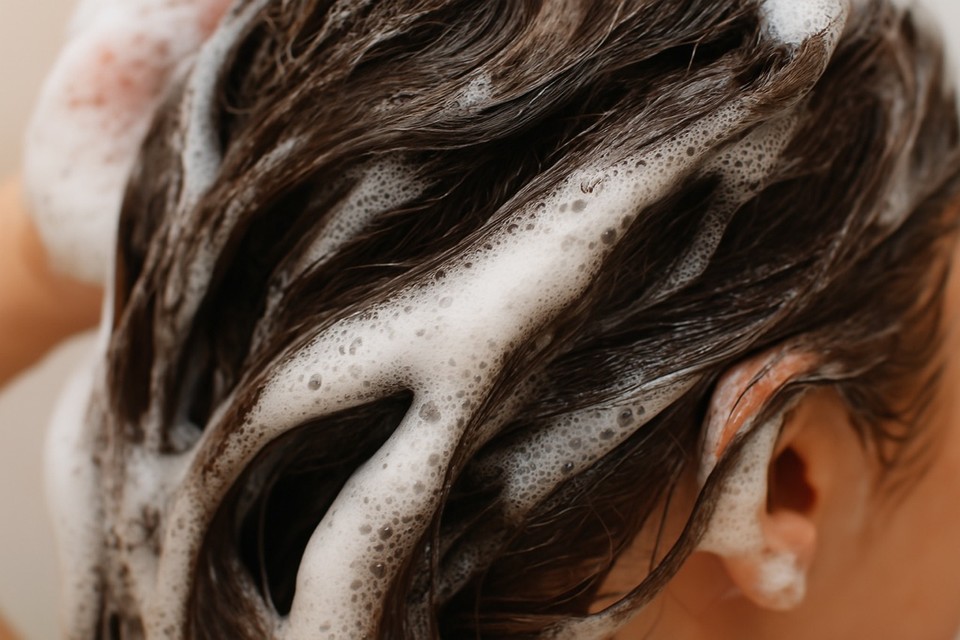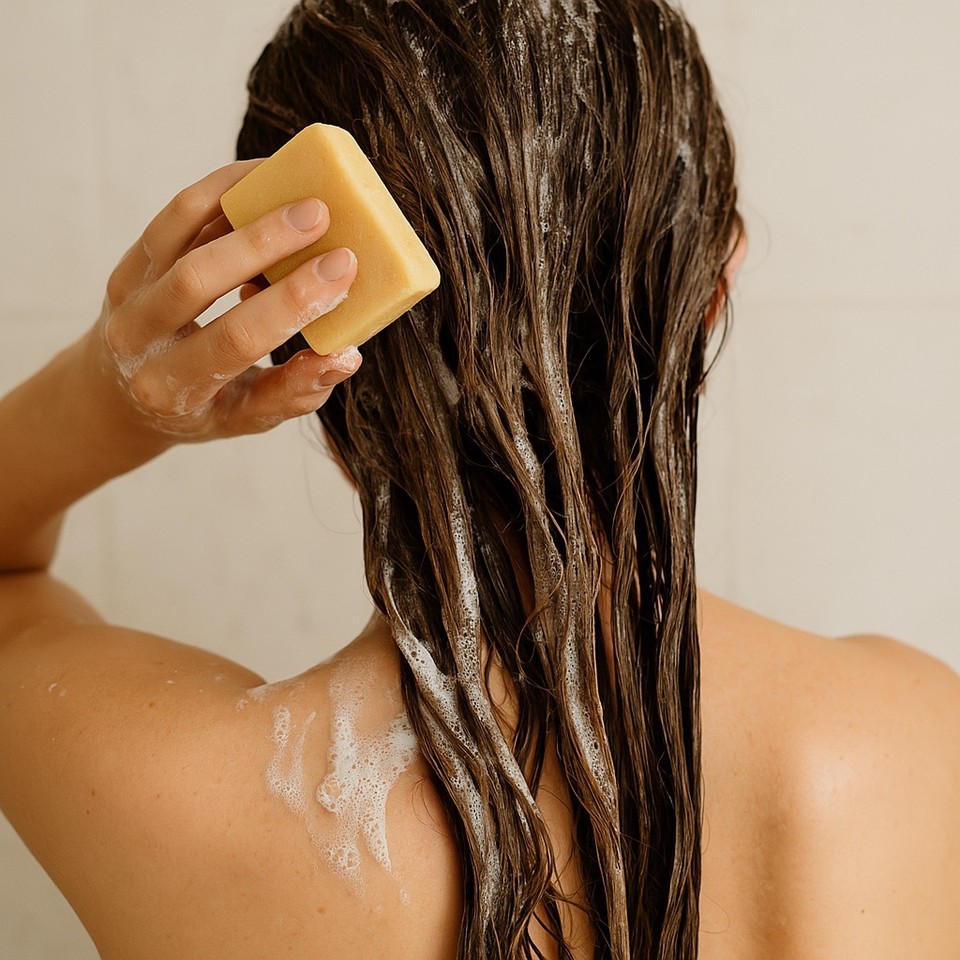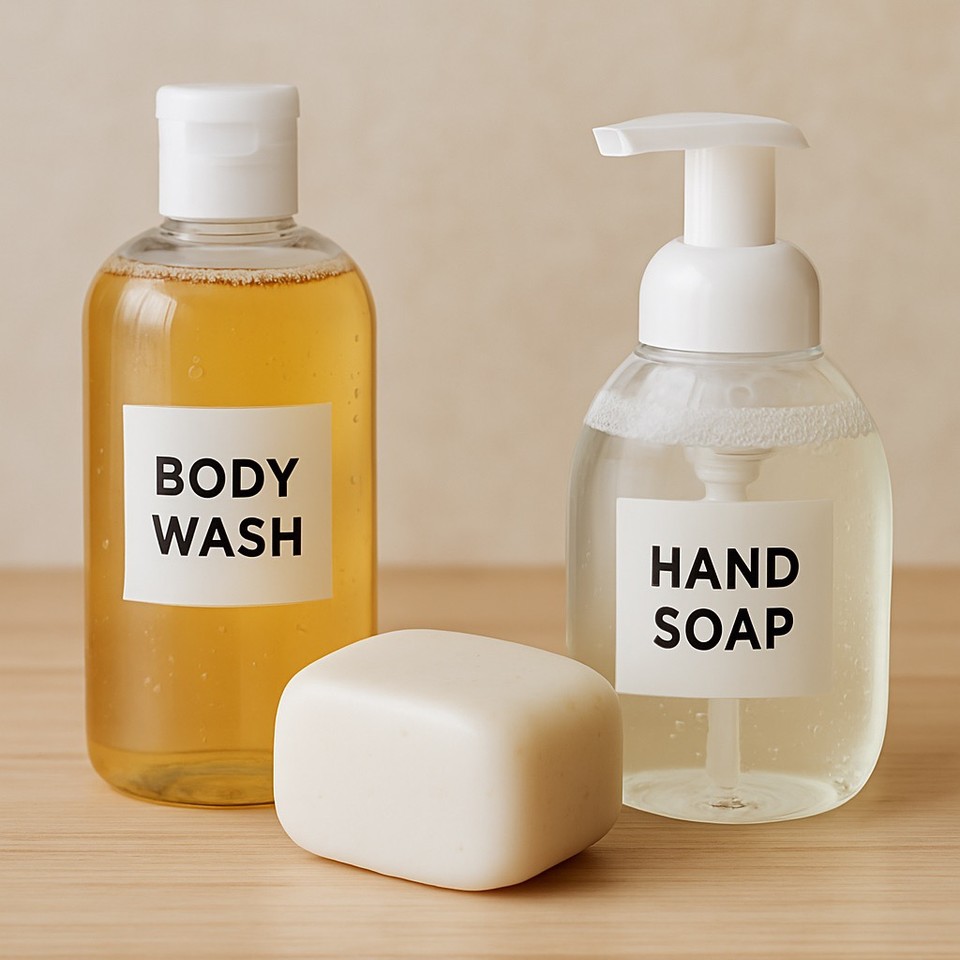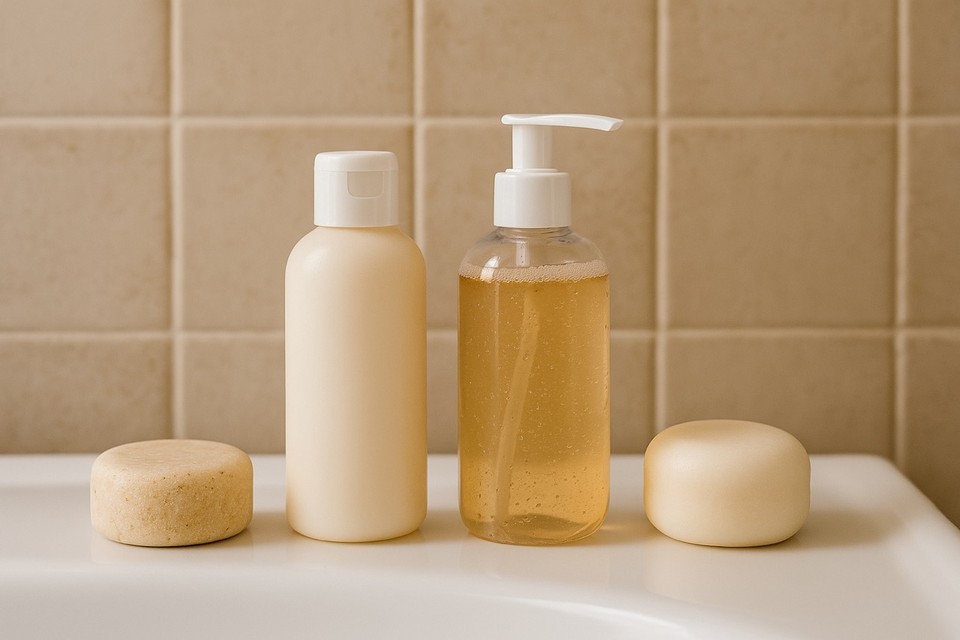Surfactants In Cosmetics
You can help support my website and channel through the “buy me a coffee” page.
Here is the link: https://www.buymeacoffee.com/diycosmetica
Your support helps me keep sharing here more information and more formulas.
This is a summary post on typical surfactants used in cosmetics. I could not include all the exciting surfactants available today, but I tried to include a variety that is very used in cosmetics today, especially with DIY cosmetics.
Solid Surfactants:
Solid surfactants are surfactants that come in powder, flake, or pellet form rather than as a liquid. They are typically mild and biodegradable and are widely used in solid-format cleansers like shampoo bars, syndet bars, and facial cleansing bars.
Unlike liquid surfactants, which are often diluted with water and preserved, solid surfactants are dry and concentrated, making them perfect for waterless formulations that are eco-friendly, travel-safe, and long-lasting.
Most solid surfactants belong to the anionic or non-ionic family, and many are derived from natural sources like coconut oil or palm kernel oil.
Sodium Coco Sulfate (SCS)
- Origin: Derived from the fatty acids of coconut oil.
- Structure: A mixture of various fatty alcohol sulfates (mostly lauryl).
- Mildness: Moderate. It’s less harsh than Sodium Lauryl Sulfate (SLS) but still can be drying in high concentrations.
- Foaming: High foaming power. Produces dense, stable lather.
- Cleansing Power: Strong. Excellent at removing oil and product buildup.
- Price: $5 - $8 per kg.
- Use Case: Great for deep cleansing shampoos or clarifying bars where affordability and lather are important.
Sodium Cocoyl Isethionate (SCI)
- Origin: Derived from coconut oil and isethionic acid.
- Structure: A mild anionic surfactant.
- Mildness: High. Very gentle on the skin and hair; commonly used in baby products.
- Foaming: Rich, creamy foam. Not as bubbly but luxurious.
- Cleansing Power: Moderate. Cleans well without over-stripping.
- Price: $12 - $15 per kg.
- Use Case: Ideal for sensitive scalps, sulfate-free formulas, and solid shampoo bars.
Sodium Lauryl Sulfoacetate (SLSA)
- Origin: Derived from coconut and/or palm oils.
- Structure: Large molecule, not to be confused with SLS.
- Mildness: High. Non-irritating and often included in natural formulations.
- Foaming: Excellent. Produces big, fluffy bubbles.
- Cleansing Power: Moderate.
- Price: $10 - $14 per kg.
- Use Case: Great for bubble baths, foaming cleansers, and low-irritation shampoos.
Sodium Myristoyl Glutamate
- Origin: Glutamic acid (amino acid) + Myristic acid (from coconut or palm kernel oil).
- Structure: Mild anionic surfactant from the amino acid family.
- Mildness: Very high. Gentle even for very dry, damaged, or treated hair.
- Foaming: Moderate. Not foam-rich but enough for pleasant use.
- Cleansing Power: Mild. Maintains lipid barrier integrity.
- Price: $20 - $25 per kg.
- Use Case: Premium shampoos, baby shampoos, and treatments for sensitive skin/scalp.
Sodium Lauroyl Glutamate
- Origin: Glutamic acid + Lauric acid (from coconut).
- Structure: Similar to Sodium Myristoyl Glutamate but with a shorter fatty acid chain.
- Mildness: Very high. Excellent compatibility with the skin.
- Foaming: Moderate to low.
- Cleansing Power: Mild.
- Price: $18 - $22 per kg.
- Use Case: Hydrating shampoos, facial cleansers, baby washes.
Sodium Cocoyl Glutamate
- Origin: Coconut fatty acids + Glutamic acid.
- Structure: Amino acid-based anionic surfactant.
- Mildness: Very high. Known for being ultra-gentle.
- Foaming: Moderate.
- Cleansing Power: Mild.
- Price: $18 - $22 per kg.
- Use Case: Ideal for sensitive formulations, facial cleansers, and minimalist shampoos.
Summary Table of Solid Surfactants:
| Surfactant | Origin | Mildness | Foaming | Cleansing | Price (per kg) |
|---|---|---|---|---|---|
| SCS | Coconut | Moderate | High | Strong | $5 - $8 |
| SCI | Coconut | High | Rich & creamy | Moderate | $12 - $15 |
| SLSA | Coconut/Palm | High | Very high | Moderate | $10 - $14 |
| Sodium Myristoyl Glutamate | Coconut/Glutamic Acid | Very high | Moderate | Mild | $20 - $25 |
| Sodium Lauroyl Glutamate | Coconut/Glutamic Acid | Very high | Low | Mild | $18 - $22 |
| Sodium Cocoyl Glutamate | Coconut/Glutamic Acid | Very high | Moderate | Mild | $18 - $22 |
*** Note: Prices are approximate and may vary based on supplier and purchase volume.

Amphoteric Surfactants
Amphoteric surfactants are surface-active agents that possess both positive and negative charges within the same molecule, depending on the pH of the solution. This dual functionality allows them to adapt to their environment, making them highly versatile and often much milder compared to anionic (negatively charged) or cationic (positively charged) surfactants.
At low pH, amphoteric surfactants behave more like cationic surfactants (positively charged), and at high pH, they behave like anionic surfactants (negatively charged).
This unique behavior gives them a balancing role in formulations: they enhance foam, stabilize lather, reduce irritation caused by harsher surfactants, and often provide light conditioning benefits.
Key Benefits of Amphoteric Surfactants
- Gentle on skin and mucous membranes – Ideal for baby products and sensitive-skin formulas.
- Foam boosting and stabilization – Especially useful in combination with anionic surfactants.
- Low eye and skin irritation – Even at relatively high concentrations.
- Mild cleansing – Effective enough for oily skin/scalp, but gentle enough for dry or delicate skin.
- Compatibility with other surfactants – Can be used alongside anionic, non-ionic, and cationic surfactants.
Common Examples of Amphoteric Surfactants
Cocamidopropyl Betaine
- INCI: Cocamidopropyl Betaine
- Origin: Derived from coconut oil and dimethylaminopropylamine.
- Uses: Extremely common in shampoos, body washes, face cleansers, and baby products.
- Notes: Foam booster and viscosity enhancer; can slightly irritate very sensitive skin due to impurities in low-grade versions.
Coco Betaine
- INCI: Coco Betaine
- Origin: Derived from coconut fatty acids and betaine (a naturally occurring amino acid derivative).
- Uses: Found in natural shampoos, gentle facial cleansers, sulfate-free body washes, and “clean beauty” formulations.
- Notes: Offers foam boosting and antistatic properties; considered more natural but may be slightly more irritating than Cocamidopropyl Betaine in some skin types. Ideal for minimalist and eco-formulations.
Coco Betaine and Cocamidopropyl Betaine are two amphoteric surfactants commonly used in hair and skincare formulations. They’re both derived from coconut oil, contribute to mild cleansing, and improve foam and viscosity—but they’re not the same. While they’re often confused or used interchangeably, there are important differences in their chemical structure, performance, and skin compatibility.
Both ingredients fall under the category of amphoteric surfactants, meaning they can behave as either positively or negatively charged, depending on the pH of the solution.
This makes them incredibly versatile and well-suited for mild cleansers, where they help stabilize lather and reduce the irritation of harsher surfactants.
They are commonly used at concentrations between 3% and 10% in formulations such as shampoos, facial cleansers, and baby washes.
The Key Differences
Although both ingredients come from coconut oil, the way they are processed and their resulting properties are different. Coco Betaine is made by reacting coconut fatty acids with betaine, resulting in a simpler and more naturally derived compound. In contrast, Cocamidopropyl Betaine is synthesized by reacting cocamide (from coconut oil) with dimethylaminopropylamine, producing a more complex molecule.
Cocamidopropyl Betaine is generally considered milder and more suitable for sensitive skin, which is why it’s widely used in baby shampoos and facial cleansers. Meanwhile, Coco Betaine—although still mild—may be slightly more irritating for some people if used at high concentrations or in poorly formulated products. In terms of “clean beauty” appeal, Coco Betaine often sounds more natural and is less chemically modified, which can be a plus for brands focusing on minimal ingredients.
Another consideration is the potential for trace impurities. Cocamidopropyl Betaine has a history of containing minor contaminants when manufactured poorly, whereas Coco Betaine, being simpler in composition, tends to have a lower risk of such impurities.
Disodium Cocoamphodiacetate
- INCI: Disodium Cocoamphodiacetate
- Origin: Coconut oil-based.
- Uses: Very gentle, often used in ultra-mild cleansers including baby shampoos and facial washes.
- Notes: Better tolerated than Cocamidopropyl Betaine; often used in premium natural formulations.
Sodium Lauroamphoacetate
- INCI: Sodium Lauroamphoacetate
- Origin: Derived from coconut and palm oil derivatives.
- Uses: Known for its gentle profile; suitable for all skin types.
- Notes: Excellent for stabilizing foam and reducing irritation in sulfate-free shampoos.
Lauryl Hydroxysultaine
- INCI: Lauryl Hydroxysultaine
- Origin: Derived from plant oils.
- Uses: Provides good viscosity and foam in sulfate-free shampoos and facial cleansers.
- Notes: Offers antistatic properties, which is helpful in hair care formulations.
Summary Table of Amphoteric Surfactants:
| Surfactant | Mildness | Foam Boosting | Origin | Viscosity Building | Typical Use |
|---|---|---|---|---|---|
| Cocamidopropyl Betaine | Moderate | High | Coconut oil | Moderate | Shampoos, face washes, body washes |
| Disodium Cocoamphodiacetate | High | Moderate | Coconut oil | Low | Baby products, sensitive cleansers |
| Sodium Lauroamphoacetate | High | High | Coconut oil | Moderate | Sulfate-free shampoos, micellar cleansers |
| Lauryl Hydroxysultaine | High | High | Coconut/Palm | High | Hair care, conditioning shampoos |
| Coco Betaine | Moderate | High | Coconut oil | Moderate | Hair care formulations |
How to Use Amphoteric Surfactants in Formulation
Amphoteric surfactants are typically used in combination with other surfactants. They act as co-surfactants, supporting the primary (usually anionic) surfactant by improving foam quality and reducing potential irritation. They are generally included at 3–10% of the total formula, depending on the desired effect.
A common strategy in sulfate-free shampoos is to combine a mild anionic surfactant like Sodium Cocoyl Isethionate with Cocamidopropyl Betaine or Sodium Lauroamphoacetate for enhanced foam and milder cleansing.

Non-Ionic Liquid Surfactants
Non-ionic surfactants don’t carry an electrical charge, unlike anionic (negatively charged) or amphoteric surfactants. This means they’re less irritating.
They have lower foam compared to anionic surfactants, but their foam is more stable and creamy. They are very compatible with other surfactants and ideal for sensitive skin formulations.
While they may not produce as much foam, non-ionic surfactants excel in mildness, biodegradability, and compatibility with sensitive skin. They are especially ideal for facial cleansers, baby shampoos, and micellar waters.
Decyl Glucoside
- INCI: Decyl Glucoside
- Origin: Derived from glucose (sugar) and decyl alcohol (from coconut or palm kernel oil).
- Function: Very mild cleansing and foaming agent; often used in natural and baby products.
- Mildness: Extremely gentle; non-stripping; safe for sensitive skin.
- Viscosity: Low to moderate.
- pH Tolerance: Stable in a wide pH range (usually 4.5–7.5).
Coco Glucoside
- INCI: Coco Glucoside
- Origin: Made from coconut alcohol and glucose (from corn or potatoes).
- Function: Mild cleanser, foam stabilizer, and emulsifier.
- Mildness: Very gentle; slightly more conditioning than Decyl Glucoside.
- Viscosity: Thicker than Decyl Glucoside; can slightly thicken formulas.
- pH Tolerance: Stable in a wide pH range.
Lauryl Glucoside
- INCI: Lauryl Glucoside
- Origin: Lauryl alcohol (coconut or palm) + glucose.
- Function: Thickening, cleansing, and foam stabilizing.
- Mildness: Very gentle.
- Viscosity: Thicker than both Decyl and Coco Glucoside.
- pH Tolerance: Broad pH compatibility.
Caprylyl/Capryl Glucoside
- INCI: Caprylyl/Capryl Glucoside
- Origin: Caprylic/capric alcohol + glucose.
- Function: Solubilizer (for essential oils) and cleanser.
- Mildness: Very mild and non-irritating.
- Viscosity: Low.
- pH Tolerance: Stable in low to neutral pH.
Polyglyceryl-4 Laurate
- INCI: Polyglyceryl-4 Laurate
- Origin: Glycerin (from vegetable sources) + lauric acid.
- Function: Emulsifier and mild cleanser.
- Mildness: Extremely gentle and PEG-free.
- Viscosity: Low to moderate.
- pH Tolerance: Stable under acidic to neutral conditions.
Sucrose Cocoate
- INCI: Sucrose Cocoate
- Origin: Sugar + coconut oil fatty acids.
- Function: Mild cleansing and emulsifying.
- Mildness: Gentle and naturally derived.
- Viscosity: Low.
- pH Tolerance: Stable in acidic pH.
7. PEG-Free Polyglyceryl-Based Surfactants
- INCI: Varies (e.g., Polyglyceryl-10 Laurate, Polyglyceryl-6 Caprylate)
- Origin: Glycerin-based, often derived from coconut or castor oil.
- Function: Used in very mild micellar water, cleansing oils, and PEG-free emulsions.
- Mildness: Ultra-mild and non-irritating.
- Viscosity: Low.
- pH Tolerance: Acidic to neutral.

Cationic Surfactants
Cationic surfactants are positively charged in solution, which makes them completely different from anionic, amphoteric, or non-ionic surfactants. They are not used as cleansers; instead, they serve as conditioning agents that bind to the negatively charged surface of hair and skin. This makes them ideal for hair conditioners, detanglers, anti-static sprays, and leave-in treatments.
They are usually not used as primary cleansers (although sometimes they appear in co-washes or 2-in-1 products) because they remain on the hair to smooth and soften it. They are generally incompatible with anionic surfactants in the same phase, so they are typically used in separate rinse-off or leave-in steps.
Behentrimonium Methosulfate
- INCI: Behentrimonium Methosulfate (and) Cetearyl Alcohol
- Origin: Derived from colza oil (rapeseed).
- Function: Very mild conditioning agent with excellent detangling power.
- Notes: Often found in natural hair conditioners and leave-ins.
Cetrimonium Chloride
- INCI: Cetrimonium Chloride
- Origin: Synthetic, quaternary ammonium compound.
- Function: Antistatic, detangling, and softening.
- Notes: Common in both rinse-off and leave-in conditioners; caution is advised at high concentrations due to potential irritation.
Steartrimonium Chloride
- INCI: Steartrimonium Chloride
- Origin: Stearic acid-based.
- Function: Strong conditioning and antistatic agent.
- Notes: Excellent for thick or damaged hair; widely used in masks and deep conditioners.
Behentrimonium Chloride
- INCI: Behentrimonium Chloride
- Origin: Derived from colza oil.
- Function: High-performance detangling and softening agent.
- Notes: Similar to Behentrimonium Methosulfate but more active; often used in rinse-off conditioners and deep masks.
Quaternium-87
- INCI: Quaternium-87
- Origin: Quaternary ammonium compound.
- Function: Lightweight conditioning that adds shine and silkiness.
- Notes: Ideal for leave-in conditioners and sprays; provides a silky finish without weighing hair down.
Polyquaternium-10
- INCI: Polyquaternium-10
- Origin: Modified cellulose derivative.
- Function: Film-forming, anti-static, and improves compatibility.
- Notes: Water-soluble and suitable for clear formulations; compatible with many anionic surfactants.
Guar Hydroxypropyltrimonium Chloride
- INCI: Guar Hydroxypropyltrimonium Chloride
- Origin: Modified natural guar gum.
- Function: Conditioning and detangling polymer.
- Notes: Provides conditioning without heaviness; used in both shampoos and conditioners.

